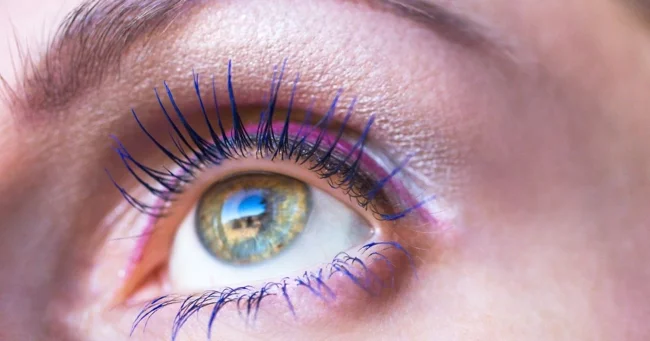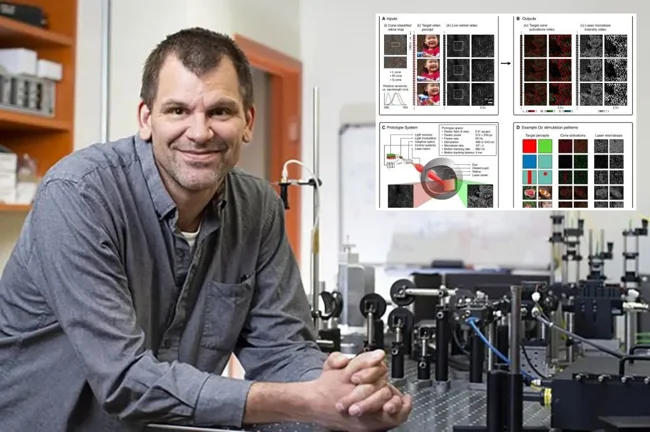Scientists have discovered a new color that humanity has not seen before (3 photos)
A team of researchers from the University of California, Berkeley and the University of Washington have discovered a new color. A special laser technology, stimulating individual cells in the retina, took perception beyond its natural limits. As a result, the participants in the experiment saw a unique blue-green color. 
Ren Ng, a professor at the University of California, Berkeley, shared his impressions with the Guardian: “We expected something incredible, but we couldn’t imagine how our brain would react to such a signal. It was amazing! The color was incredibly saturated.” 
Austin Rorda, a vision scientist at the University of California, Berkeley
The scientists shared an image of a turquoise square to approximate the color. It can only be seen by shining a laser on the retina.
As part of the study, the Berkeley researchers scanned the retinas of volunteers to pinpoint the M cones. They then used a laser to flash a light into the area. The team chose the name “olo” for the new color. This is a reference to binary code, indicating that only the medium-wave receptors in the eye are stimulated.
Vision specialist Austin Rorda said: "The colour can't be described in a paper or shown on a screen. It's just a version of it, which pales in comparison to 'olo'." 
Approximate image of 'olo'
British professor John Barbour dismissed the discovery as "of little significance".
"It's not a new colour," he said. "It's a richer green that can only be produced by someone with a normal red-green chromatic mechanism, when a single light source is directed to the M cones."
Cones are receptors in the retina of the eye that perceive daylight and colors in bright light. There are three types of cones, each sensitive to different wavelengths of light: S (short wavelength), M (medium wavelength), and L (long wavelength).
Natural light consists of many wavelengths that activate all three types of cones at the same time. Red light primarily affects the L cones, and blue light primarily affects the S cones. However, natural light does not contain wavelengths that stimulate the M cones, as they are located in the center of the retina.
























